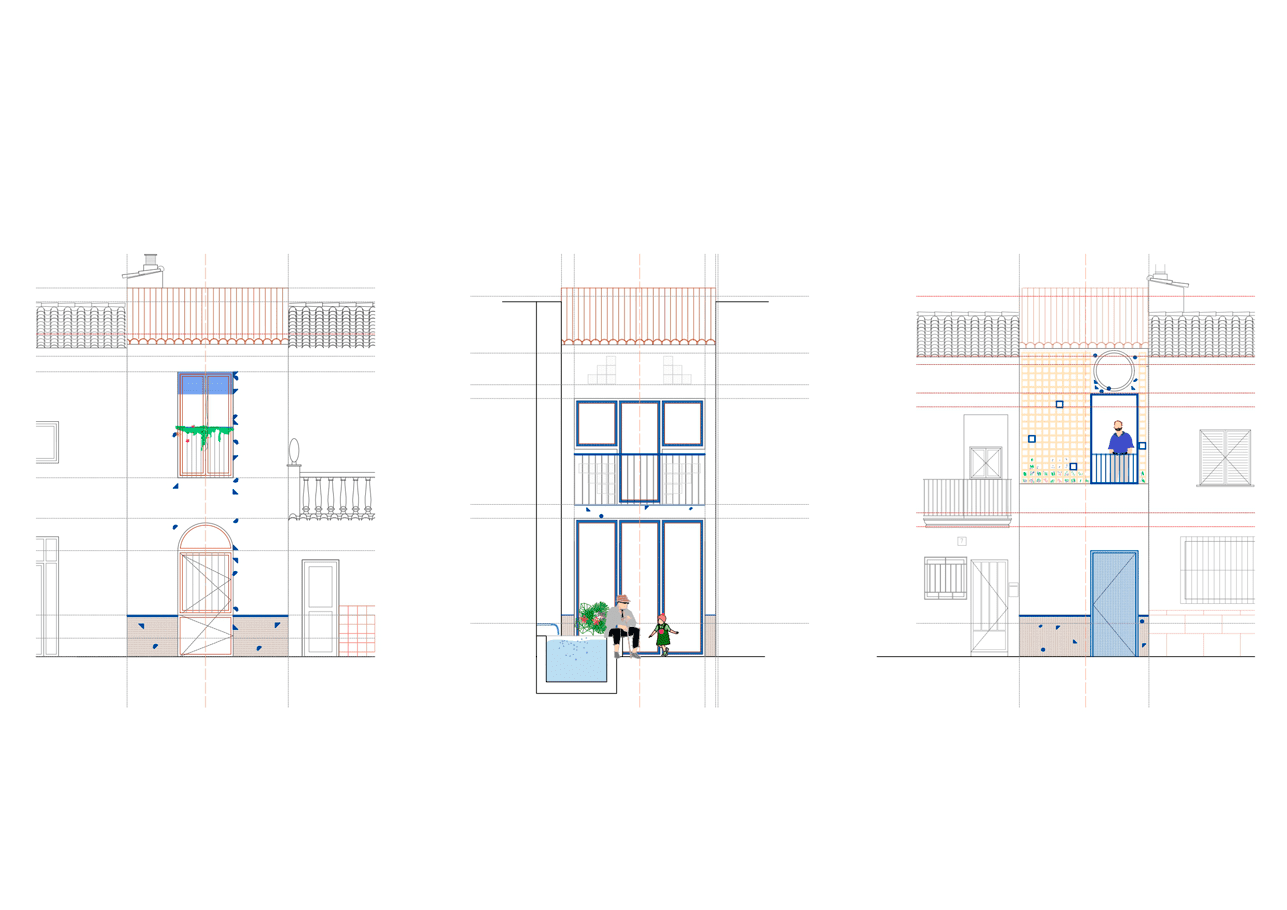
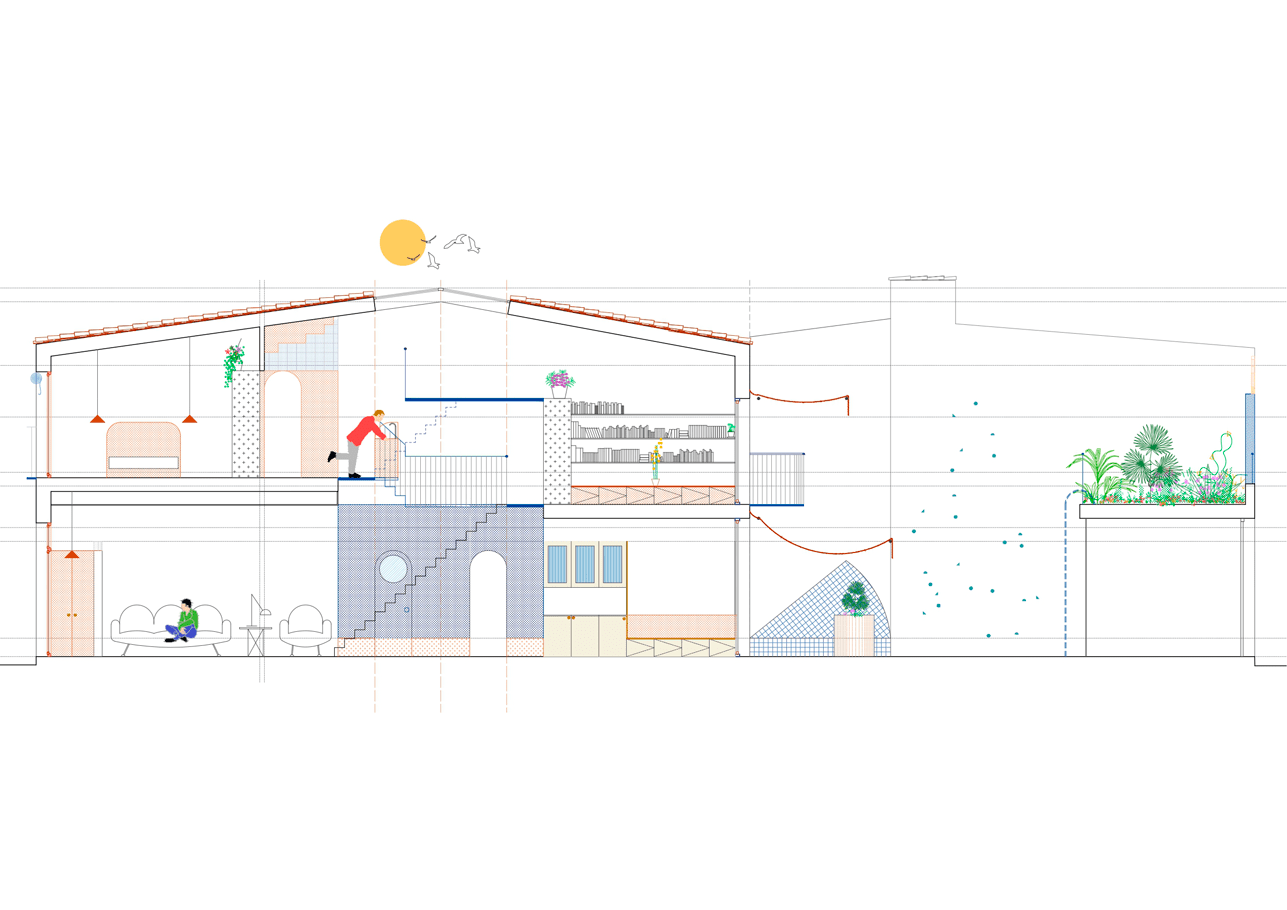
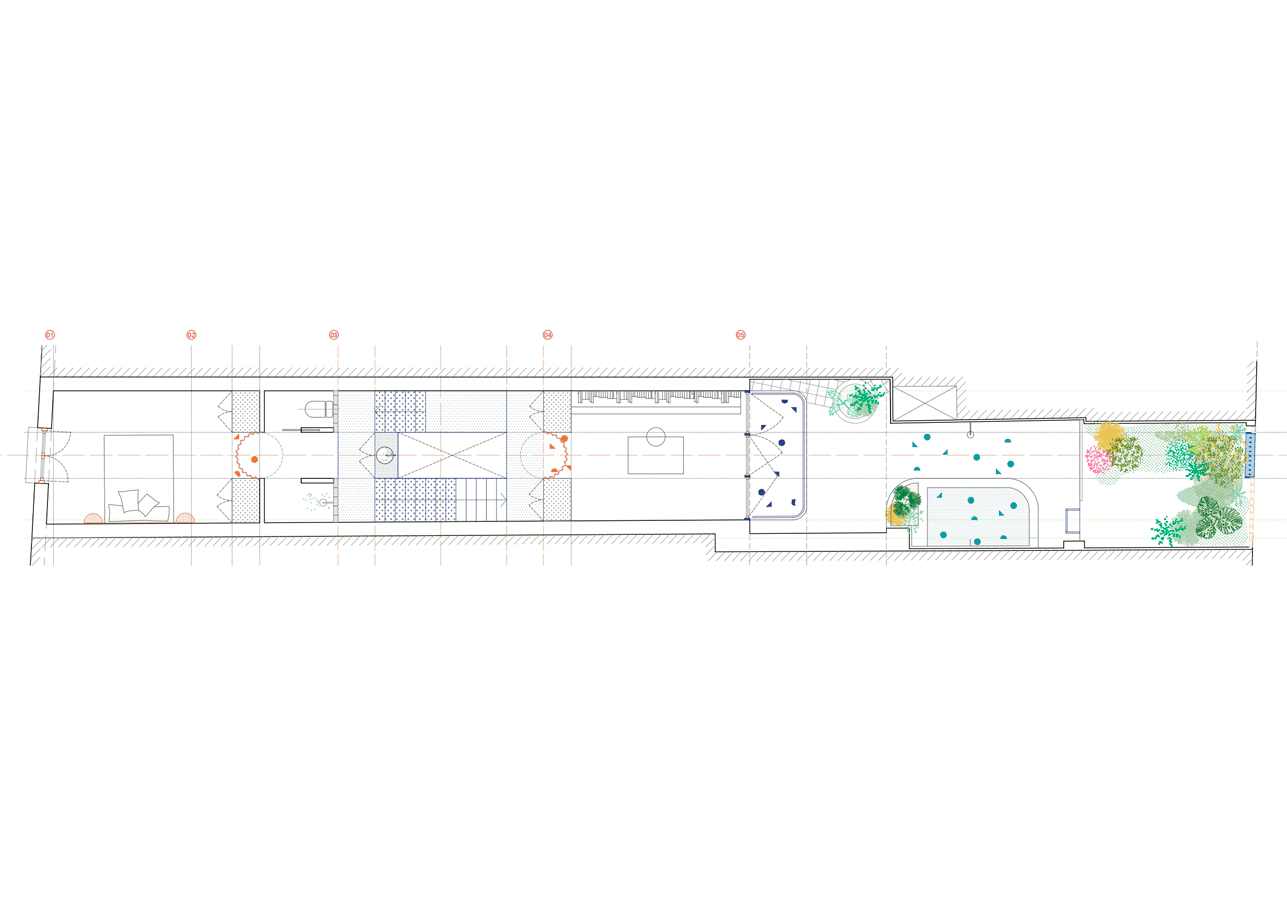
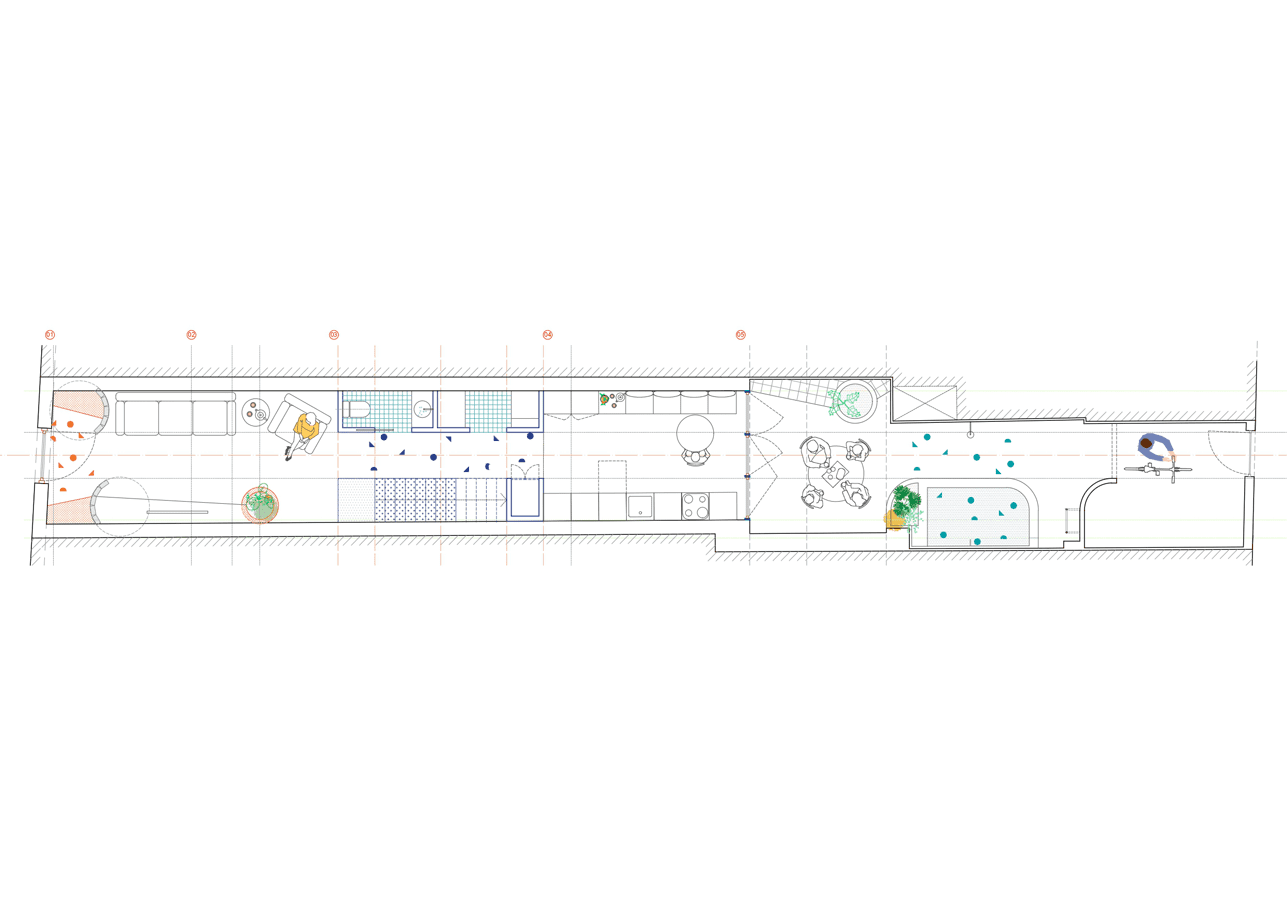
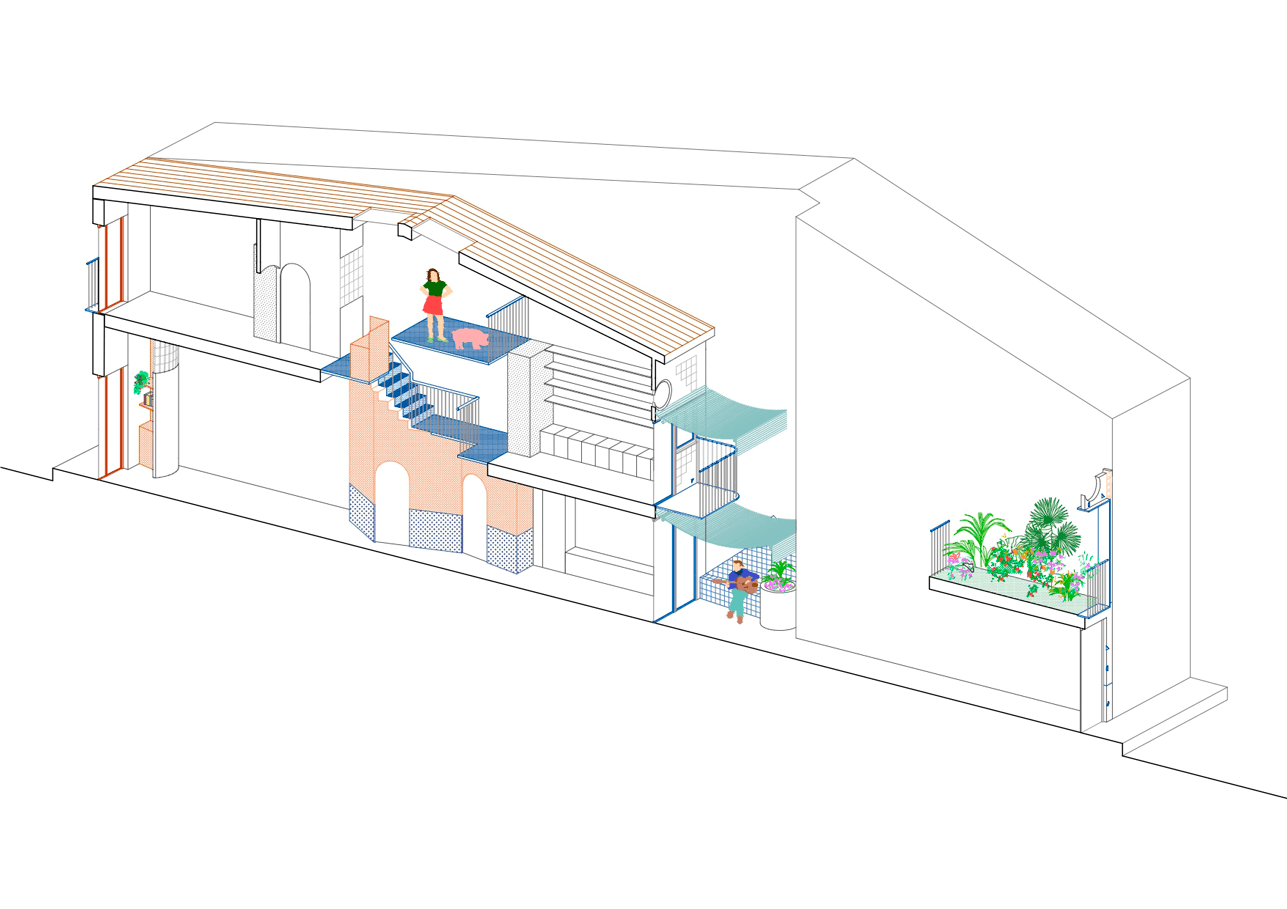
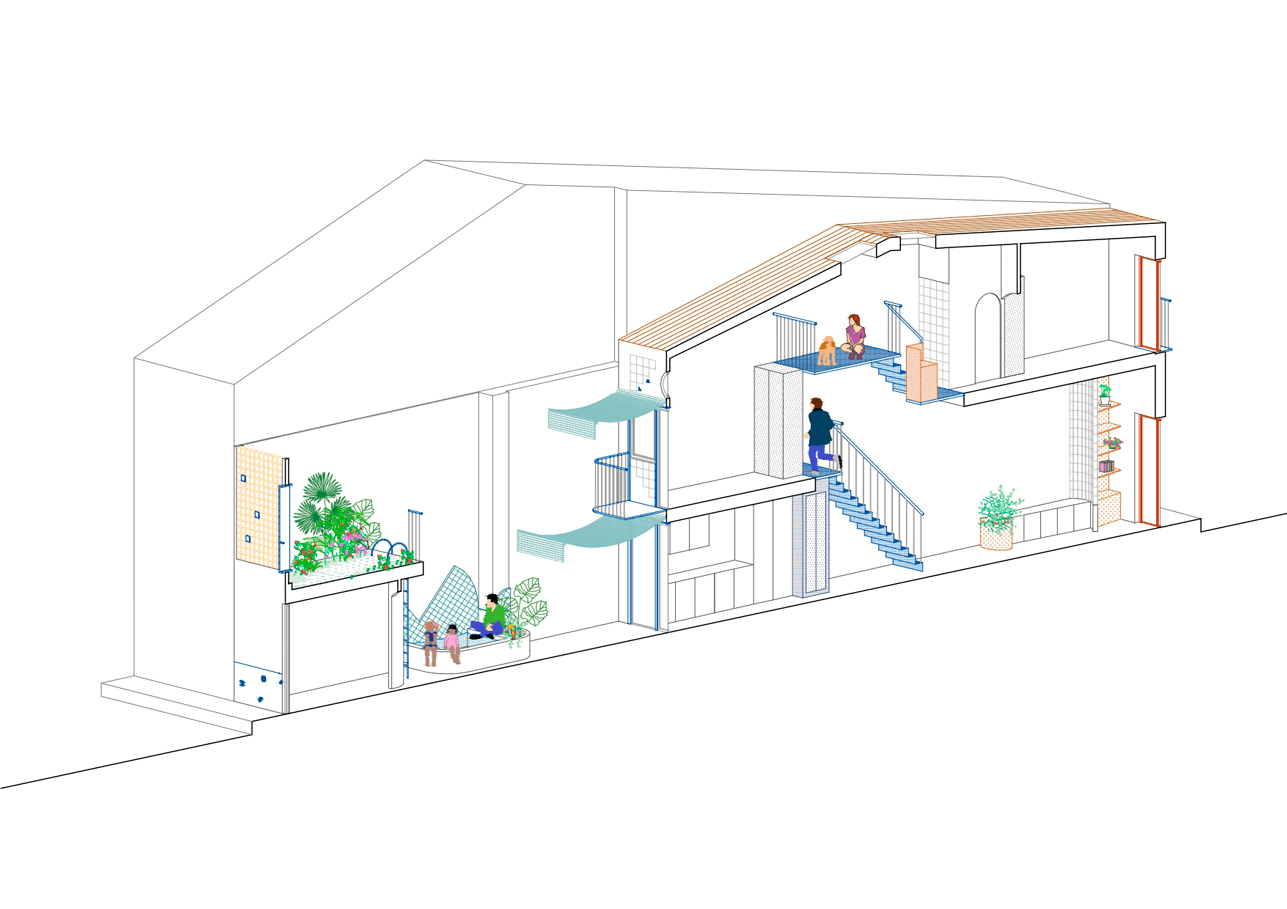
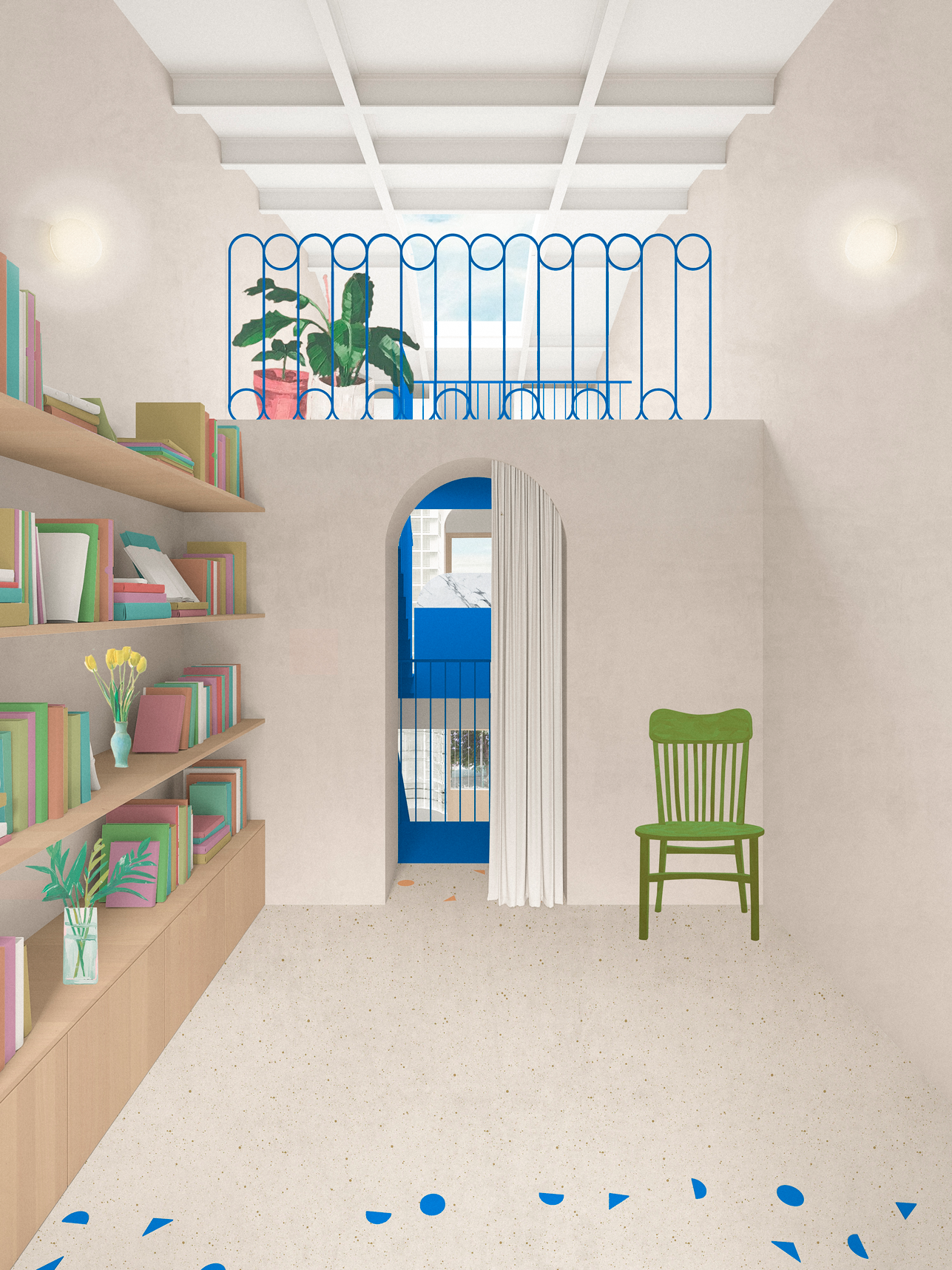


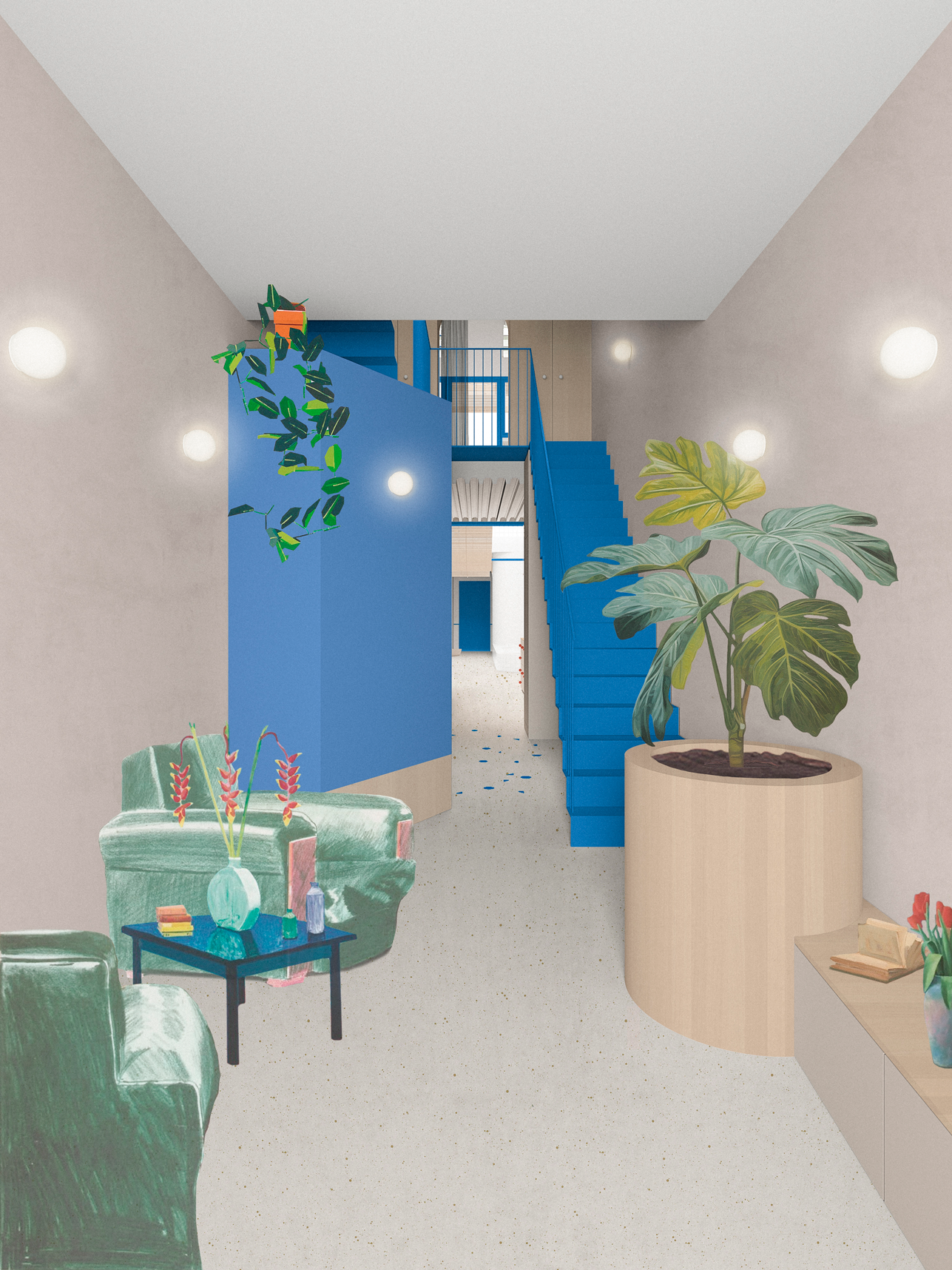

Casa mira qui passa
Adrián Ripoll Ortolà. Architect
Diego Romero. Temcco. Structural calculation
The house is located on a plot between two streets on the western perimeter of the consolidated centre of Cheste. The main peculiarity from the outset was determined by the excessive narrowness of the plot, 3.50 metres on its widest side and 2.80 metres on the opposite side, which was a fundamental aspect at the time of starting the project.
With much regret for both ourselves and the client, we had to demolish the existing building on the plot, which had been the family home for at least two generations. Although the house was also between the two streets, it was built on the narrower side, leaving a courtyard on the opposite façade. Its dimensions did not meet the minimum measurements required by the current habitability regulations, so that it was unviable to transform it into a contemporary construction, far surpassing the already difficult fit of integrating a dwelling with spatial interest on a plot of these characteristics.
The required programme was simple: a living-dining room-kitchen opening on to a courtyard in which to place a small pool and a storage space; a bedroom, a study in which to telework and, as closed rooms, a lavatory and a bathroom.
Access to the ground floor is via a vestibule in contact with the street, conceived as a space in which to take off one’s shoes and leave one’s coat. This is separated from the rest of the floor by a screen. From there, the space is practically diaphanous and is directly related to the courtyard, with only a closed nucleus in the centre housing a toilet and a laundry room. The work on the section is developed by means of unclimbing floors, presided over by a spiral staircase that, in the manner of a vantage point, becomes the protagonist of the house.
A first flight leads to the study overlooking the courtyard and, from here, a second flight to the bedroom and bathroom area, the latter separated into three parts. The height of the house is topped off with a skylight in the gable roof that brings light and richness to the space.
In the organisation of the home we have sought to provide lightness, spaciousness, fluid circulations, cross ventilation, long views and plenty of light.
The work in section is completed in the courtyard, which is covered on the façade opposite the volume of the house by a forging in which to have a solarium and many plants, while concealing the required storage area.
The materiality is honest and discreet, while daring in the use of colour.
The treatment of the façades facing the street is resolved with elements that identify with the place, such as lime mortar as cladding and Alicante shutters as solar protection.
On the main façade, facing west, the openings are designed to be contained and adapted to the scale and rhythm of the neighbouring dwellings. Only two openings: a balcony on the first floor and an access door on the ground floor. The latter allows for multiple opening configurations: it can be opened completely to go in and out, half open to allow a conversation between inside and outside, left with the window open for ventilation or simply with the shutter ajar to allow light to pass through.
On the façade facing the courtyard, we allow ourselves more material freedom and greater transparency with larger openings in relation to the courtyard and the eastern sun in the morning. We imagine a pleasant reading from inside the studio with long views towards the backdrop of the leafy, plant-covered ceiling or a summer dinner in the courtyard where inside and outside merge and the sound of the water falling over the pool merges with the crickets.
Towards the opposite street, a false façade is built with a ceramic lattice, in which a single opening opens up like a balcony. This allows one to look out, to get visually closer to the street and helps to blur the boundary between inside and outside. It is a balcony designed to watch who is passing by, thus facilitating the encounter between the public and the private.
Colour is used in the details and light materiality is used in the floor slabs and interior elements: the floor slabs between floors are made of exposed sheet metal and the sloping roof slab is made of steel profiles that are also visible and lacquered in white. The central core made up of the staircase, the walkways and the ground floor toilet become the protagonist elements in the interior and, like a central sculpture, are dyed blue. The same colour, modifying its tonality, colonises the rest of the house in the details: handrails, joinery, details in the flooring or finishes on the façades. The rest is resolved with wood in medium tones for the furniture elements, paving blocks to allow the light that enters to dissipate, continuous screeds with exposed grain to resolve the flooring and clay plaster for the wall cladding.
In short, a delicate, contained and light project that blends into its surroundings while standing as a new neighbour.

